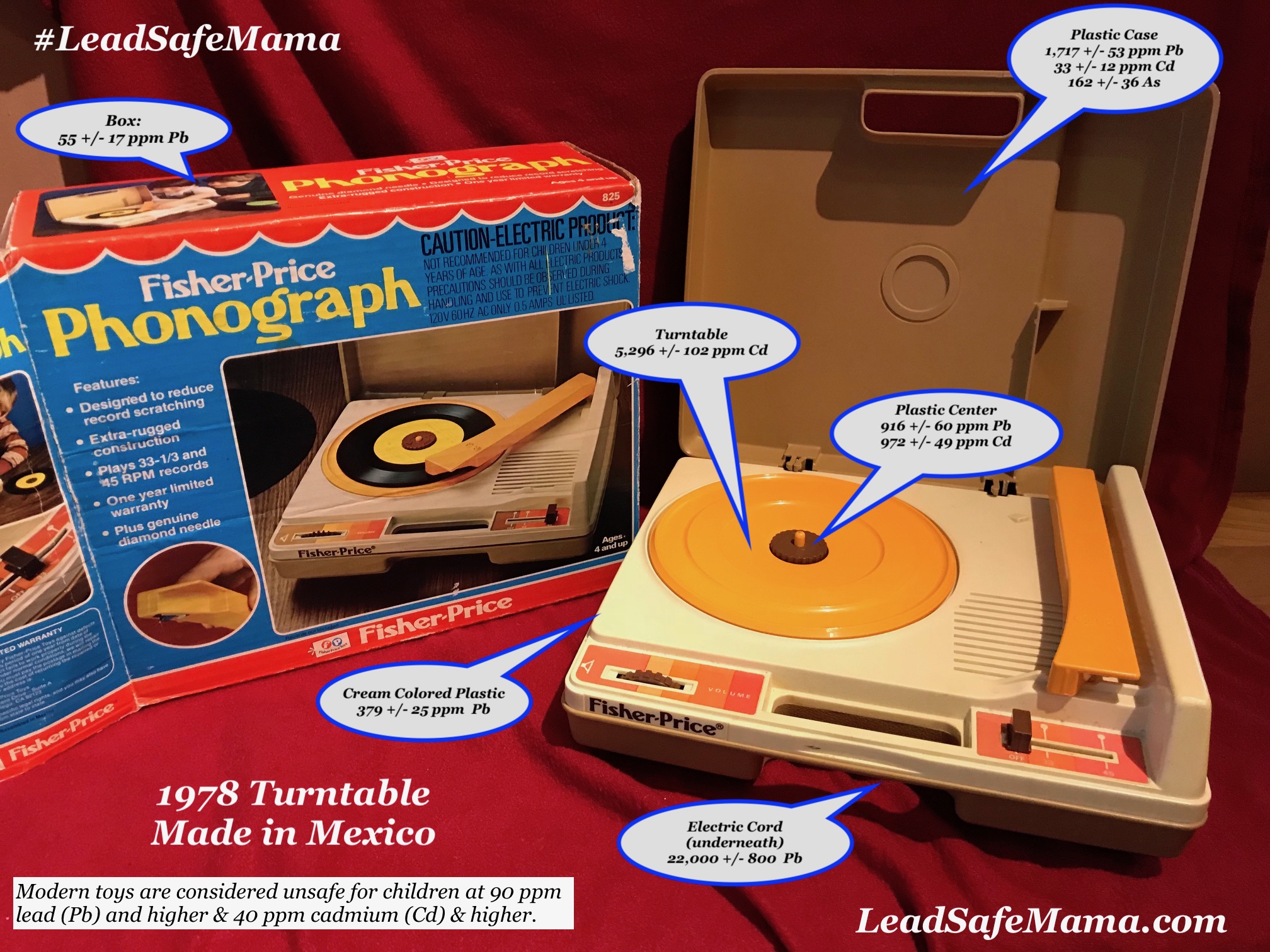Vintage 1978 Fisher Price Record Player: 22,000 ppm Lead [90 ppm is unsafe], 5,296 ppm Cadmium [75 is unsafe].
Sorry this is a lazy post just so I could make sure to get this information up.
The readings for each of the components tested are in the image, click the image to see it full size. I will update this post with more information soon.
In the meantime:
To see more vintage Fisher Price items I have tested, click here.
To see records I have tested, click here.
To see more vintage toys I have tested, click here.
As always, let me know if you have any questions!
Thank you for reading and for sharing my posts!
Tamara Rubin
#LeadSafeMama
Never Miss an Important Article Again!
Join our Email List




Just found your site and I’m learning so much! I have this record player from when I was a kid and still use it with my kids. I understand ingesting lead is not good. So it makes sense that toys kids could put in their mouths would not be good. But what difference does it make if there is lead in a record player?
Thanks for your help!
Because you absorb things through your skin, and kids notoriously put their hands in their mouths. Children are also much more vulnerable than adults overall.
Don’t ever underestimate the skin. As the product gets older, tiny particles can shed, and you could breathe them. As with peeling lead paint in your house. Fine if it isn’t disturbed, but it gets dicey when you fool with it, such as scraping or sanding in that case. Please check on the wiring often. The components will start to break down and could be a fire hazard. Don’t leave them plugged in. It would be best to have an electronics engineer properly repair it if you see damage. Look for cracks /splits on the wiring casing. Any amplifier repair guy or electrician should be able to get a bead on it, I don’t think they’re complicated items internally. It wouldn’t be cheap, an amp guy who normally does music stuff tends to charge 65.00 just to look at it, then charge for the repair. I’ve found it wasn’t so bad after the initial 65.00, depending on the problem.
Based in its age, it might be more than just lead. Could be things like mercury, also, but I don’t know the normal components of this item. Or PCBs, that I think stop electronic overheating…?
Amazing any of us are alive today, lol